
Click the blue text👆 Follow & Star us
The electronic Jianghu will not get lost

Introduction
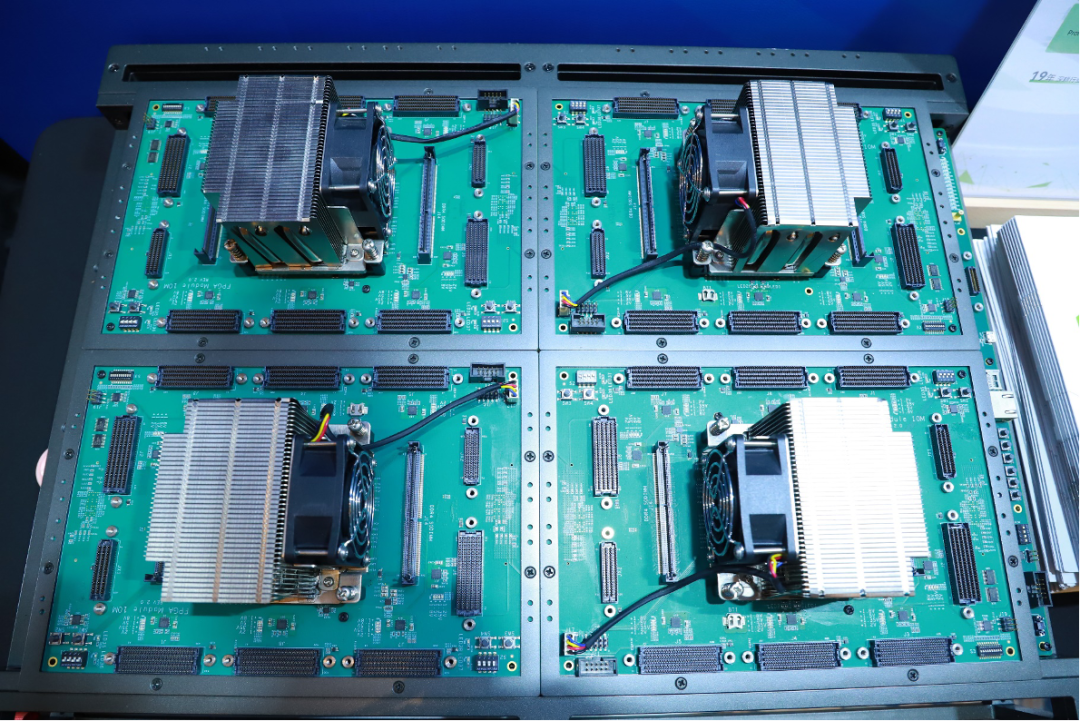

The Rise of RISC-V Architecture:
For a long time, the processor architecture field has been dominated by Intel’s x86 architecture and ARM’s architecture. ARM leads in embedded and mobile devices due to its excellent energy efficiency and wide application, but its closed-source nature and high licensing fees have led manufacturers to seek more economical and flexible solutions. x86 dominates the PC and server market, but its complexity and high power consumption limit it in low-power devices, while RISC-V, with its simple instruction set and excellent energy efficiency, is gradually making breakthroughs in these areas.
RISC-V is an open-source, modular processor architecture proposed by the University of California, Berkeley in 2010. Its open-source, modular business model is the main advantage. The basic ISA and IP cores are open-source and free to license, greatly reducing the costs for design companies and meaning they can avoid being restricted by key technologies. Global tech giants like Google, Nvidia, Intel, Qualcomm, and many Chinese companies have begun to pay attention to RISC-V. Among the 25 highest-level Premier Members, 14 are Chinese companies.
The development potential in the RISC-V field has attracted numerous global participants. According to Counterpoint Research’s forecast, by 2025, RISC-V’s share in the global CPU market will reach 14%, in the IoT market it will reach 28%, in the industrial market it will reach 12%, and in the automotive market it will reach 10%. Other data shows that by 2027, the AI chip market based on RISC-V architecture will reach $291 billion, with a compound annual growth rate of 73.6%. Heavyweight companies like Alibaba Cloud, Huawei, and Tencent have all given high attention to the development of RISC-V. The participation of these companies will accelerate the development and application of RISC-V in China and even globally. For example, Alibaba Cloud has released its first RISC-V processor for use in internal servers within Alibaba Group to improve performance and reduce power consumption.

Professor Krste Asanovic, co-founder of SiFive and main inventor of RISC-V
In June 2023, at the RISC-V Technology Forum held in Shenzhen, Professor Krste Asanovic, co-founder of SiFive and main inventor of RISC-V, along with Mr. Gang Zhijian, Senior Vice President of Marketing and Business Development at SiFive, were interviewed by reporters from Weixin. Professor Asanovic stated that RISC-V will surpass all other processing architectures in the next 2-3 years. He also predicts that by 2025, RISC-V processor shipments will exceed 80 billion, with a compound annual growth rate of 114.9%, and its share in the global CPU market will reach 14%.
As a leader in the RISC-V field, SiFive plays an important role in the Chinese market. The open-source, modular, flexible, and easily extensible characteristics of RISC-V provide significant opportunities in the tech industry, especially in the fields of autonomous driving and AI. At the same time, the open-source and customizable features of the RISC-V architecture provide important choices for the global semiconductor market, especially in China. The success of RISC-V also relies on a strong and vibrant ecosystem. A large number of companies and organizations have joined the RISC-V Foundation, making significant contributions to the development and promotion of RISC-V. These include global tech giants like Google, Intel, and Nvidia, as well as 14 Chinese Premier Member companies. These companies and organizations are collectively promoting the standardization of RISC-V and developing various compatible tools and software, making it easier for designers and engineers to use and develop RISC-V-based products and services. Among RISC-V’s senior members, 55% are Chinese chip manufacturers, which means that Chinese chip manufacturers now have the right to speak and make decisions in the RISC-V architecture, transforming them from past followers to current leaders.

Openness and Customization:
It is worth mentioning that,the industry’s previous impression of RISC-V was still stuck in the MCU market, but in fact, RISC-V can do much more than just MCU and is beginning to challenge the advantageous fields of x86 and ARM.
For RISC-V, its biggest competitive advantage is openness and customization. This allows any manufacturer to freely use and add their own RISC-V extensions to meet their specific needs. Such flexibility cannot be achieved in ARM and x86 architectures. Especially in the fields of autonomous driving and AI, its flexibility, openness, and scalability give it a significant advantage in these emerging tech fields.
As the world’s largest IoT market, China has 1.4 billion IoT users, and the flexibility, low power consumption, and high performance characteristics of RISC-V make it very popular in the IoT market. Especially after the establishment of the RISC-V Industrial Alliance in the Chinese chip industry in 2018, RISC-V’s development has received unprecedented momentum. According to statistics, in just three years, the global shipment of RISC-V chips has exceeded 10 billion, with China’s shipments reaching 5 billion. As the expected shipment of RISC-V cores rises to 80 billion, SiFive and its partners are accelerating their pace in product updates and market expansion, especially in embedded devices, artificial intelligence, IoT, automotive electronics, and 5G communications. Global IT and semiconductor companies, including Samsung, Intel, Nvidia, Qualcomm, and Google, have jointly launched the global RISC-V software ecosystem initiative “RISE Project” to promote the marketization of RISC-V processors in various fields.
Data from the RISC-V International Foundation shows that in December 2019, there were 435 RISC-V members, and three and a half years later, the number of foundation members reached 4,000, showing an increase of nearly tenfold. Major global companies have participated to varying degrees in the RISC-V research and development, and the openness of RISC-V allows developers to have choices. Once developers choose RISC-V, they can choose an IP provider or build their own core, and have the possibility of extending the instruction set, and can build better software together with the entire RISC-V ecosystem. Mr. Gang Zhijian, Senior Vice President of Marketing and Business Development at SiFive, stated: “The market for RISC-V will definitely be larger than that of Arm and x86.”
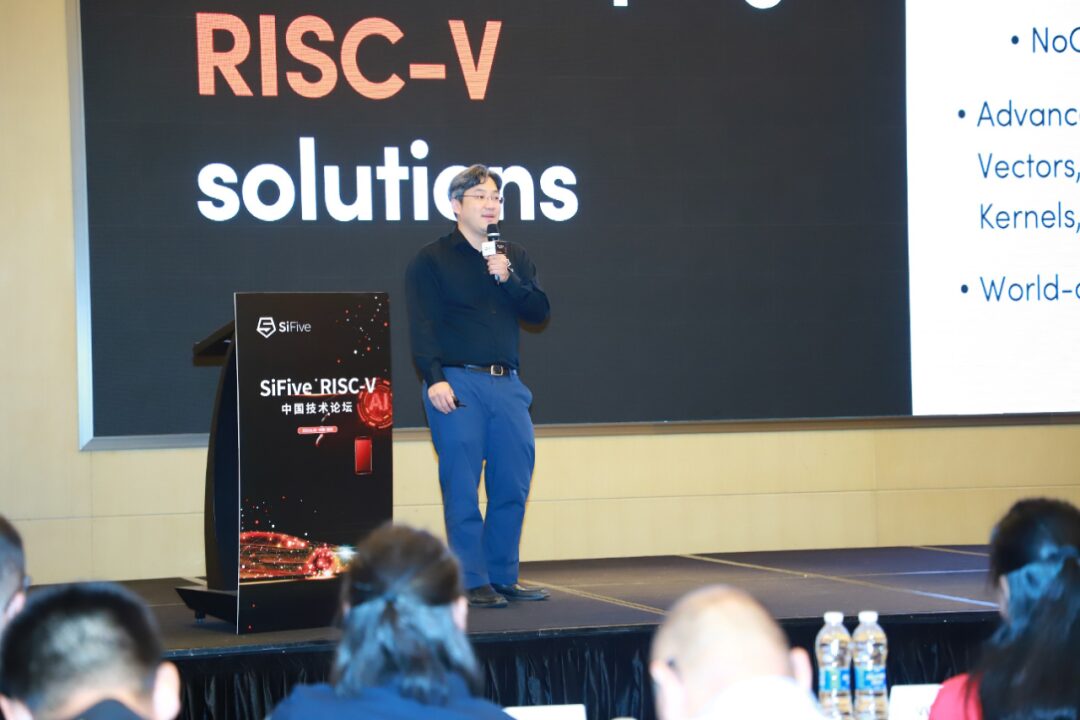
Mr. Gang Zhijian, Senior Vice President of Marketing and Business Development at SiFive
In August 2022, Alibaba Pingtouge launched a new RISC-V platform – Wu Jian 600, which has a main frequency of 2GHz and performance comparable to ARM’s A73 core launched in 2016, showing that the performance of the RISC-V architecture is already quite high. This opens up new pathways for RISC-V’s application in higher performance devices like PCs. In the server field, Jia Nan Technology plans to launch a RISC-V server chip with 64 cores.
With strong promotion in China, the RISC-V architecture is gradually gaining recognition globally. Now, many American tech giants, including Qualcomm and Google, have also begun to invest R&D resources into RISC-V. In December 2022, Google announced that Android would support the RISC-V instruction set, aiming to treat RISC-V as a “first-class platform” in Android. Google plans to launch a RISC-V supporting emulator in 2023 and will begin supporting Android Runtime (ART) in the first quarter, allowing most Android applications to run on RISC-V without additional development.
At the end of 2022’s RISC-V summit, Qualcomm’s Product Management Director, Manju Varma, stated that RISC-V played a key role in Qualcomm’s products, and by the end of 2022, Qualcomm had shipped over 650 million RISC-V chips. Qualcomm’s new core “ORYON” has completely detached from Arm’s public version architecture, and the reason Qualcomm chose RISC-V may be related to its lawsuit with Arm, such as prohibiting the selection of GPU cores and forcing the use of public version architecture, which poses a threat to Qualcomm’s exclusive advantages. Relatively speaking, the more free and open RISC-V may better meet Qualcomm’s upcoming needs.
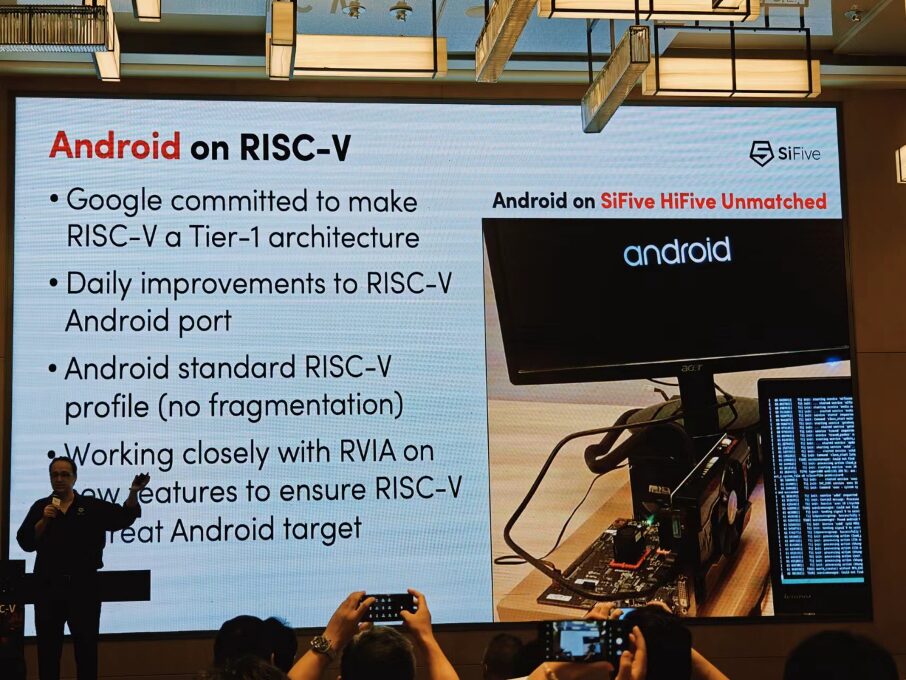
Demonstration of RISC-V chips supporting the Android system
It can be said that with the increasing participation of heavyweight chip manufacturers, the RISC-V architecture is gradually moving from a market challenger role to a leader role, posing a severe challenge to the existing mainstream architectures of ARM and x86.

SiFive, the world’s first professional RISC-V core commercial supplier, provides RISC-V architecture core IP and SoC solutions for global users, such as Intel, Huawei, and Western Digital.SiFive’s products have advantages of powerful performance, low power consumption, and flexible customization, and are widely used in consumer electronics, cloud computing, and IoT industries.
As the inventor and main promoter of the RISC-V architecture, SiFive is promoting the development of this field through various means and strategies. SiFive not only enhances its technical strength by releasing new processor IPs but also further improves its RISC-V processor ecosystem through multiple collaborations. For example, in May 2019, SiFive successfully introduced Imagination Technologies into its DesignShare ecosystem, allowing customers to easily access Imagination’s GPU and neural network accelerator IP cores. At the same time, SiFive has also established deep cooperation with Synopsys to jointly solve SoC design challenges for RISC-V customers.
In manufacturing, SiFive has reached cooperation with many globally renowned foundries, such as TSMC, GlobalFoundries, and Intel, to help customers produce customized SoCs based on SiFive core IP. All these greatly advance the development of the RISC-V processor ecosystem.
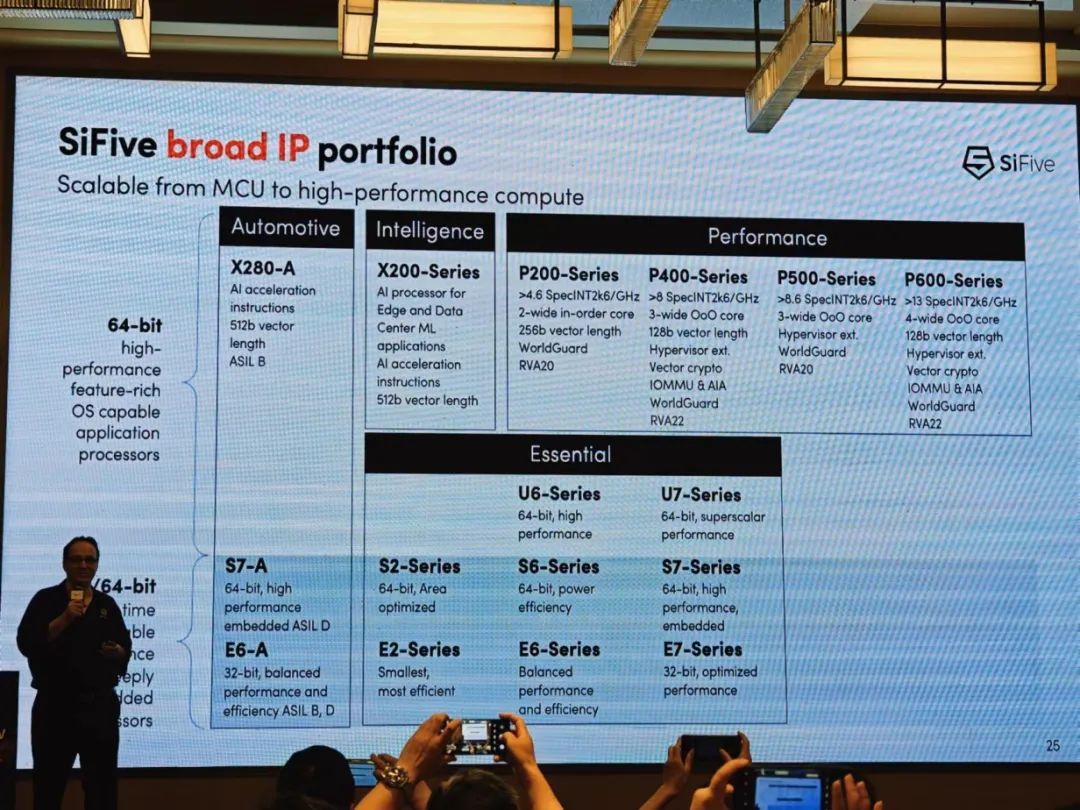
SiFive Product Roadmap
SiFive has over 100 customers, providing four major product series: Essential, Performance, Intelligence, and Automotive, which can meet various applications from AI to wearables to the automotive industry. The Essential series provides a wide range of processor solutions, the Performance series targets high-performance applications, the Intelligence series prioritizes software to meet AI and deep learning needs, and the Automotive series is suitable for high performance, high energy efficiency, and system safety needs, covering application scenarios such as in-car infotainment, electronic cockpits, networking, and ADAS.
In terms of performance, SiFive’s Performance series is the leader in RISC-V, including products chosen by NASA and Google. Compared to Arm Cortex A55, SiFive’s P470 has a SPEC score of 19, with a performance advantage of 2.75 times and an area reduction of 35%, achieving a 4-fold advantage in computational density.
In addition to SiFive, many other companies worldwide are actively participating in the RISC-V research and application, including Nvidia, IBM, Alibaba, and others. The participation of these companies not only enhances the technical level of the RISC-V architecture but also expands its application scope in various market fields, making the prospects for the RISC-V architecture even brighter. In June this year, SiFive participated in the global RISC-V software ecosystem initiative “RISE Project” launched by Google, Pingtouge, Intel, and 13 other companies. This project aims to accelerate the software ecosystem construction and commercialization process for the new RISC-V architecture, further enhancing RISC-V’s influence and application prospects globally.
However, in the face of increasingly fierce market competition, SiFive and other companies also face many challenges. How to continuously enhance technical levels, provide high-quality products and services, meet user needs, and expand market share will be important issues for these companies’ future development. Although the development prospects of the RISC-V market are broad, the competitive environment is also very intense. Each company is actively exploring its development path, hoping to win market share and achieve its own development by providing excellent products and services.
Professor Krste Asanović, co-founder and chief architect of SiFive, told reporters from Weixin: “RISC-V will have the best processors and the best ecosystem; this is already a trend. SiFive hopes to accelerate the development of the RISC-V ecosystem together with its Chinese partners. It is expected that in the next two to three years, RISC-V may break through performance levels and application field limitations and will soon surpass all other architectures.

IP Architecture More Suitable for Automotive and AI Technology Transformation
The advancement of automotive electrification, intelligence, and connectivity has triggered a massive demand for semiconductor chips, which increasingly account for a larger proportion of vehicle costs. According to data, the semiconductor value content of fuel vehicles and electric vehicles is $450 and $750, respectively, with the latter increasing by 66.67% compared to the former.
As electric vehicle sales grow, the automotive chip market is also rapidly expanding. Traditional processor architectures often cannot meet the high performance, low power consumption, and specific functional demands of these new applications. At this time, the emergence of RISC-V provides a new solution. Its open design allows automotive chip manufacturers to layout characteristics according to their own needs, enriching product forms. Its functionally safe processor cores can greatly enhance the safety performance of in-vehicle systems, benefiting the safe development of the national automotive industry supply chain.
The “New Four Modernizations” of automobiles (electrification, intelligence, networking, and sharing) are disrupting the automotive industry, and this new market is very suitable for RISC-V.
Mr. Gang Zhijian has high confidence in RISC-V’s potential in artificial intelligence (AI) and automotive fields. He believes that with the development of intelligent and electrified technologies in the automotive industry, new hardware and software demands are constantly emerging, providing new opportunities for RISC-V. SiFive, with its leading technical strength and market sensitivity, has become the only company in the world capable of providing a complete RISC-V automotive-grade solution, which is a significant achievement from its close cooperation with many industry giants, such as Google, Samsung, Qualcomm, Intel, and Microchip.
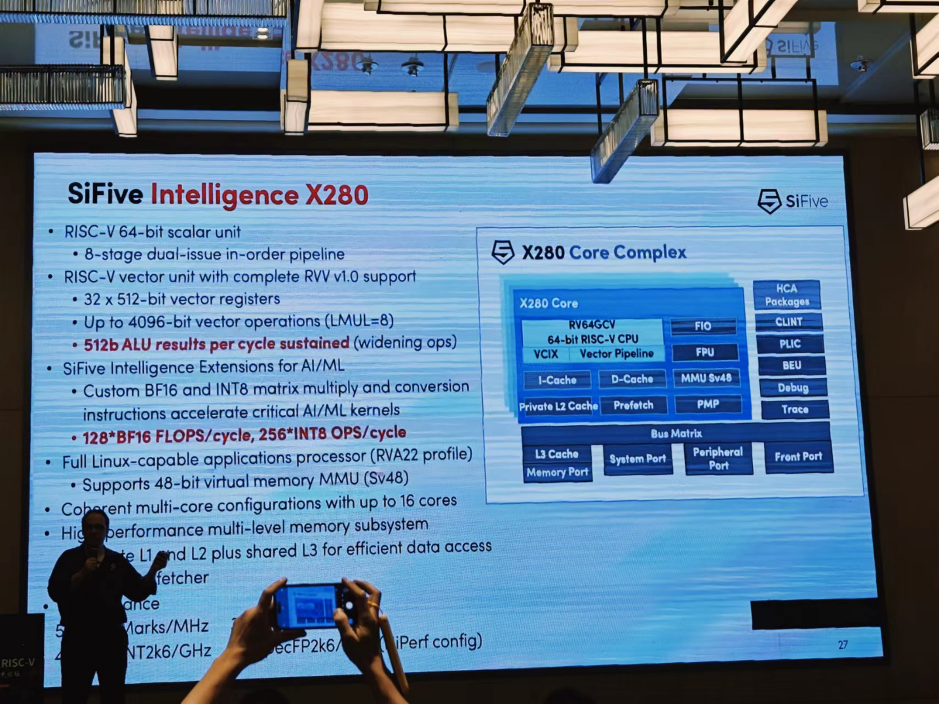
Intelligence X280 for Generative AI
To meet this growing market demand, SiFive has launched a series of products, including the Performance series for high-performance markets, the Intelligence series for the AI field, and the Automotive series designed specifically for automotive applications. Among them, the Performance P470/670 series is a 64-bit RISC-V processor core IP targeting the high-performance market, particularly suitable for the new generation of wearable and smart home devices. Intelligence X280 supports multi-core and multi-cluster configurations, suitable for applications requiring high throughput and single-thread performance, such as AR/VR, sensor hubs, IVI systems, etc. Gang Zhijian stated that regardless of whether it is a high-end or mid-low-end application, RISC-V products can meet the requirements. SiFive has built a product line for automotive applications that meets various ASIL safety standards, aiming to leverage its technological advantages and become a leader in this technological revolution. It is understood that SiFive’s automotive-grade high-performance computing partners include a top global automotive chip manufacturer.
It is worth mentioning that SiFive is not only focused on the automotive industry; they are also looking toward the AI field. With the SiFive X280 processor, which has AI processing capabilities, SiFive successfully meets the growing demands of the market. This processor is equipped with high-performance RISC-V CPU cores, supports a large amount of parallel processing capability, and can greatly simplify the difficulty of AI development, meeting higher AI computing power requirements.


Although the competition between RISC-V and ARM, x86 has just begun, its rapid development and advantages have already shown its disruptive potential. For example, Google, Western Digital, and others have begun to adopt RISC-V architecture. On the other hand, against the backdrop of decoupling in the industrial chain between China and the U.S. and even globally, RISC-V is giving hope to more countries looking to control their supply chain security. In addition to China, countries like Russia and India are also actively investing in RISC-V projects. For instance, Russia has established the “Russian RISC-V Alliance”. India has designated RISC-V as the national instruction set and has successfully developed two domestic RISC-V processors: Shakti and Vega, and SiFive has also established a design center in India.
Globally, RISC-V is rapidly emerging in countries like China, Russia, and India, becoming a key factor in driving technological development. However, despite its unique advantages and immense potential, RISC-V still faces many challenges in the global chip market competition, such as the complexity of technology research and development and talent shortages. The open-source, modular, flexible, and free commercial model is indeed a major advantage of RISC-V.
However, this advantage may lead to ecological fragmentation and division. On the other hand, as RISC-V relies on the continuous investment and operation of commercial companies, when the industry reaches a mature stage, it will inevitably return to the old path of ARM and x86’s closed commercial model. Fortunately, RISC-V’s development is still in its early stages, and these issues can be gradually resolved in the future. Although there is currently competition among major RISC-V IP suppliers, overall, they are still jointly expanding the market size. With more innovators and practitioners joining, and as RISC-V shows advantages in the automotive, AI, and other fields, RISC-V undoubtedly deserves closer attention from the industry, and we look forward to its far-reaching impact in future market competition.

Industry Community
Weixin has built communication communities for various industries. Scan the code to add me as a friend and reply [Gifts, Join Group] to unlock benefits.

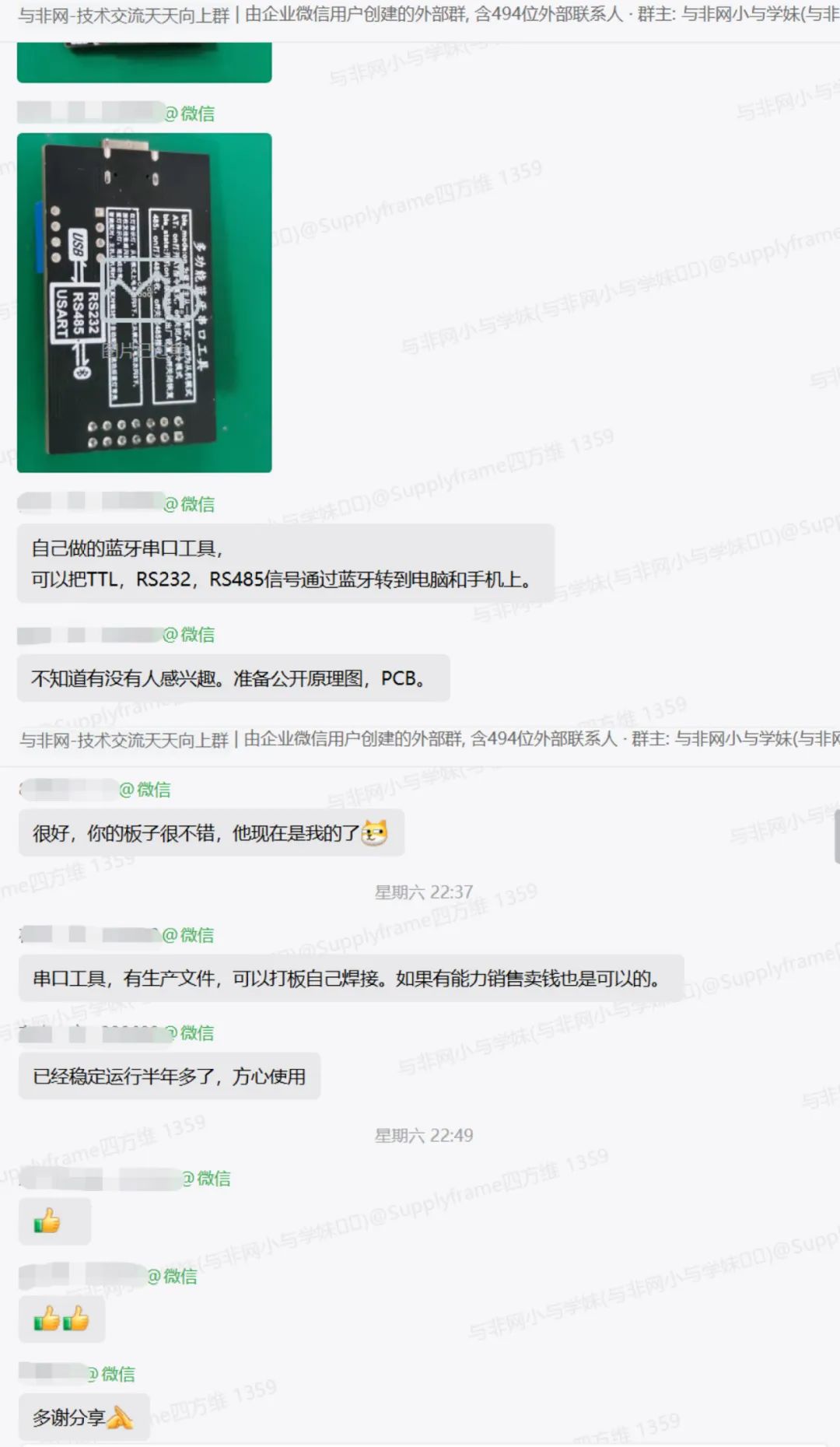
Technology | Jobs | Industry | Events
Authoritative community in the electronics industry
Over a thousand expert groups working together
Welcome to join the Weixin group
Scan the code to join the technical exchange group and get a tool gift package

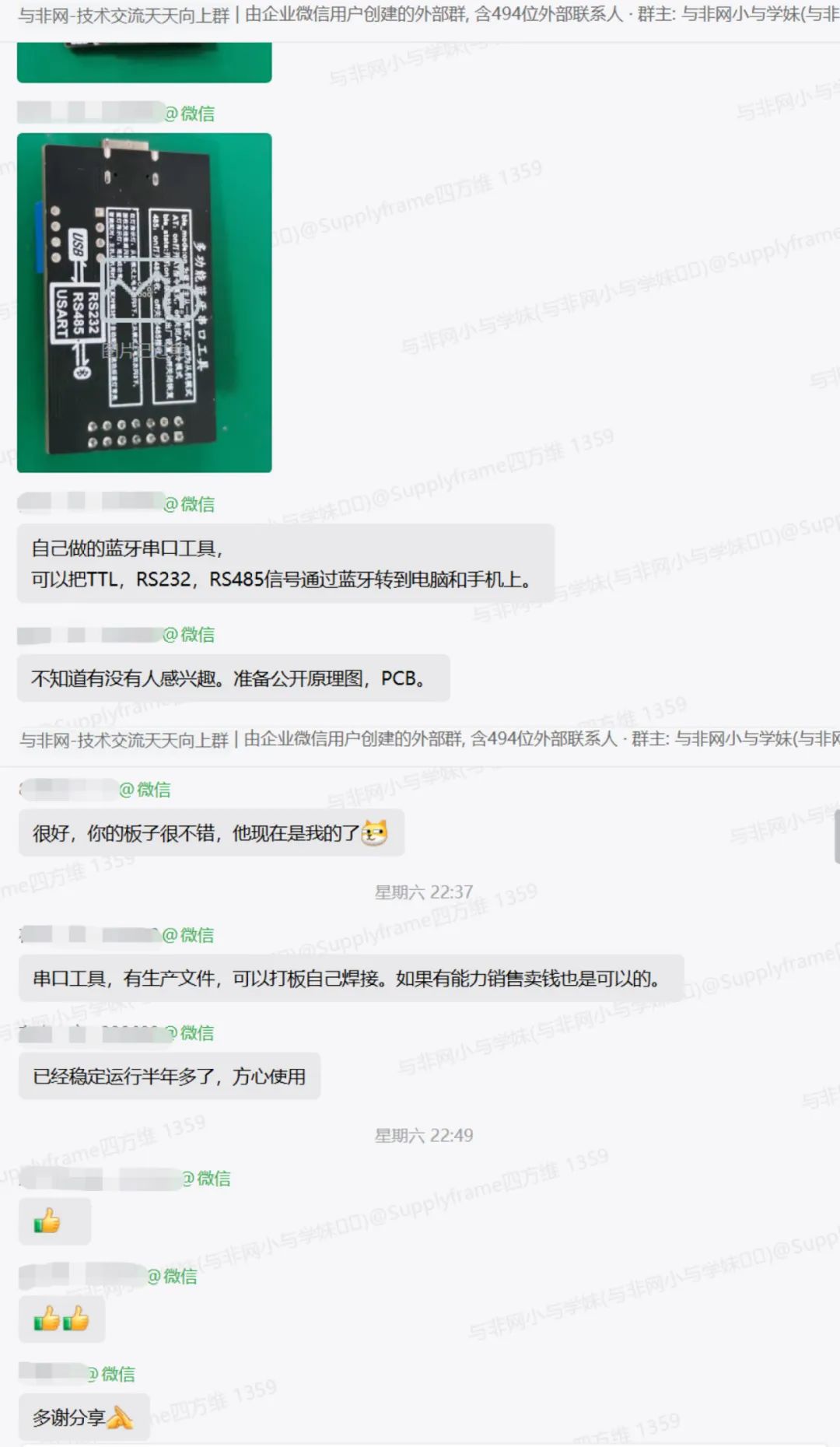
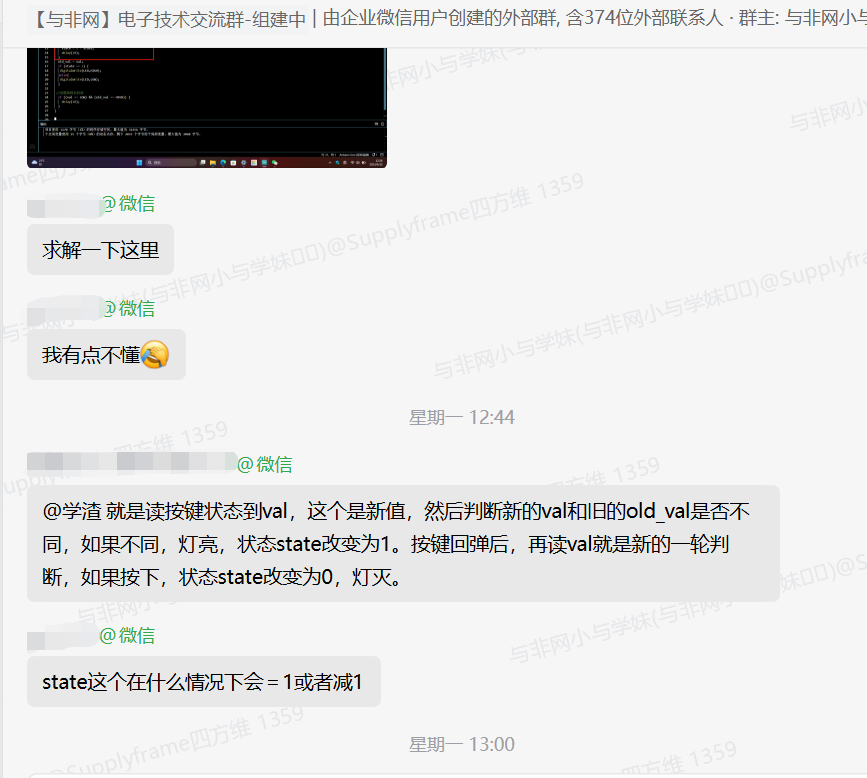
Swipe down
Author’s Column:
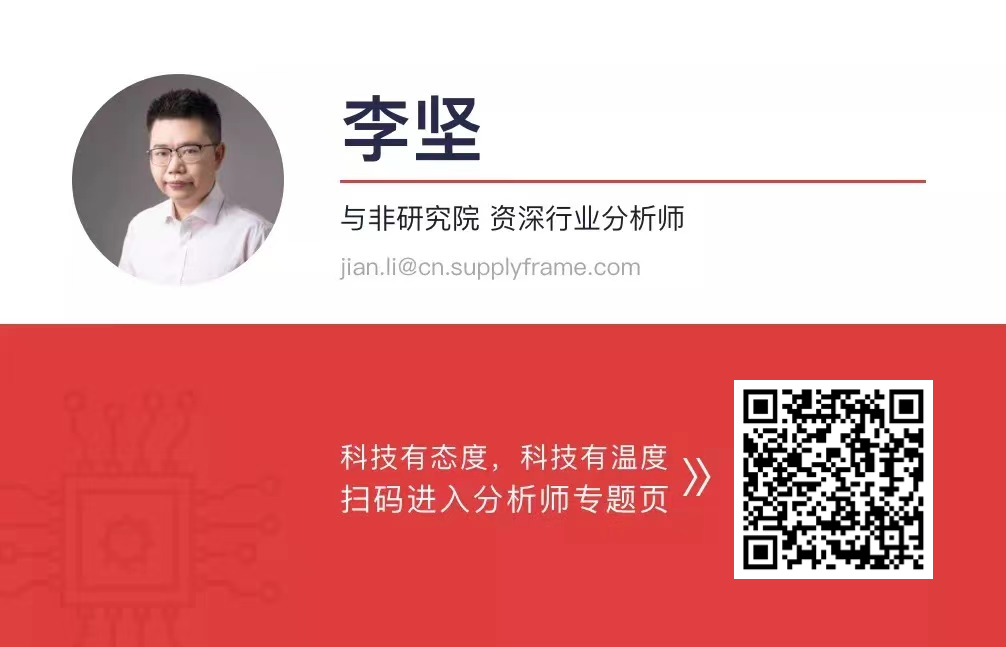
Previous Recommendations
|
|||
|
|||
|
|||
|
Click “Looking” to share your world with friends
 Please click “Read Original” for more information
Please click “Read Original” for more information
